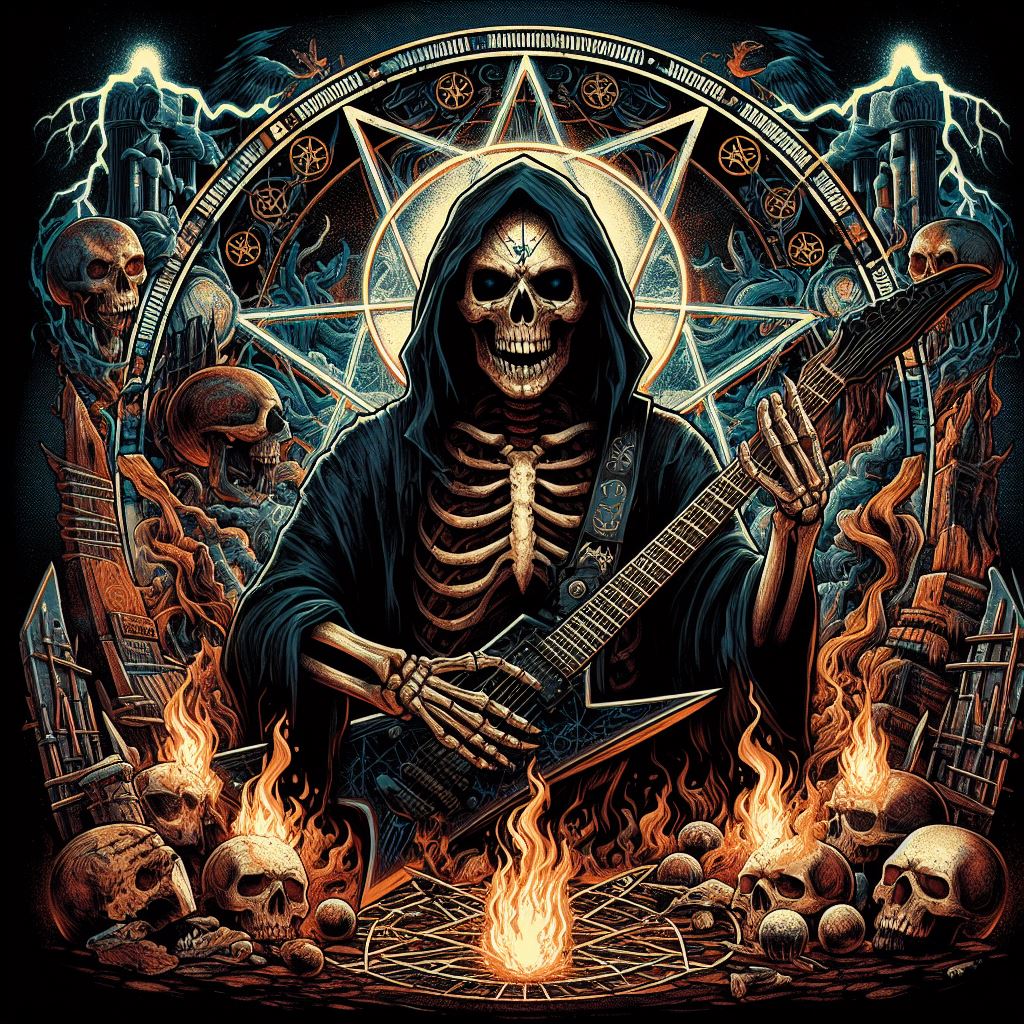Sodom, a name synonymous with aggression and aural brutality, stands as a titan in the pantheon of thrash metal. Hailing from the industrial heart of Germany, this band has not only left an indelible mark on the genre but also influenced the development of black and death metal.
Their story begins in 1981, in the bleak mining town of Gelsenkirchen. Fueled by a desire to escape the drudgery of factory life, bassist and vocalist Tom Angelripper, along with a revolving cast of early members, formed Sodom. Their initial sound, heavily influenced by Motörhead, Venom, and the burgeoning thrash scene, was dubbed “witching metal” by the band themselves. Demos like “Witching Metal” (1983) and “Victims of Death” (1984) showcased their raw, aggressive approach, catching the attention of the underground scene.
Sodom’s first stab at a cohesive lineup came with drummer Chris Witchhunter and guitarist Aggressor. They signed with Steamhammer Records and released the now-classic “In The Sign of Evil” EP in 1984. However, lineup instability continued to plague the band. Aggressor left before the studio sessions, and guitarists Grave Violator and Destructor (later of Kreator) filled the void temporarily. Despite the constant changes, Sodom persevered, releasing their debut album, “Obsessed by Cruelty,” in 1984. This record cemented their place as a force to be reckoned with, showcasing their signature blend of fast tempos, ferocious riffing, and Angelripper’s guttural vocals.
1987 saw a turning point with the arrival of guitarist Frank Blackfire. His technical prowess and songwriting contributions helped Sodom refine their sound on albums like “Expurse of Sodomy” (1987) and the genre-defining masterpiece, “Persecution Mania” (1987). This album solidified their “Big Four of Teutonic Thrash” status alongside Kreator, Destruction, and Tankard. “Persecution Mania” pushed the boundaries of thrash, incorporating elements of black metal with its blasphemous themes and raw aggression. Tracks like “Til Death Do Us Part” and “Sodomy & Lust” became anthems for a generation of headbangers.
The late 80s and early 90s saw a period of experimentation for Sodom. “Agent Orange” (1989) dealt with the horrors of war, while “Better Off Dead” (1990) explored a more melodic direction. Lineup changes continued, with Blackfire departing and Andy Brings taking his place. However, these shifts couldn’t quite recapture the magic of the late 80s.
The mid-90s brought a period of commercial struggle and internal conflict. Albums like “Maschine” (1992) and “Get What You Deserve” (1994) saw the band flirt with industrial metal elements, alienating some fans. Angelripper, the sole remaining founding member, kept the band afloat through numerous line-up changes.
By the late 90s and early 2000s, Sodom had returned to a more thrash-oriented sound with albums like “Code Red” (1999) and “M-16” (2001). They continued to tour relentlessly, solidifying their reputation as a live juggernaut.
The 21st century saw a resurgence for Sodom. Blackfire’s return in 2018, along with the addition of a second guitarist, Yorck Segatz, breathed new life into the band. Albums like “Genesis XIX” (2020) proved that Sodom’s creative fire still burned brightly.
Sodom’s legacy is undeniable. Their influence can be heard in countless extreme metal bands across the globe. Their unwavering dedication to thrash metal, coupled with their willingness to experiment, has secured their place as one of the genre’s most important and enduring bands.

Leave a Reply
You must be logged in to post a comment.